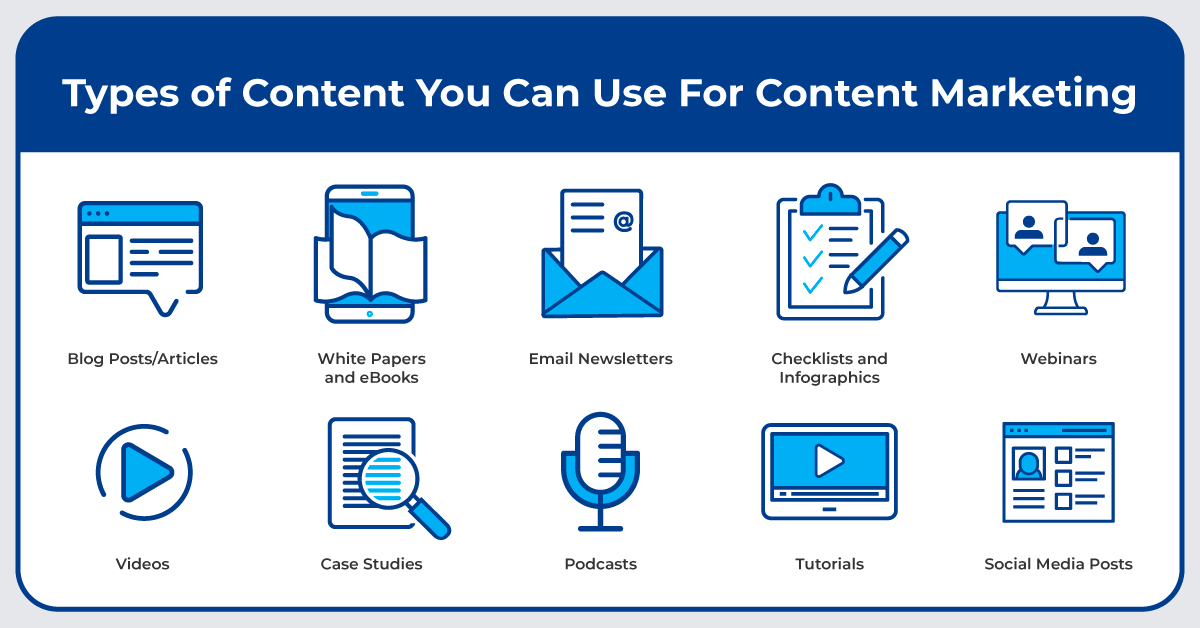The majority of marketers will agree that ecommerce content marketing is one of the best investments you can make for your online store.
An ecommerce content strategy increases traffic and conversions, lowers acquisition costs, promotes thought leadership, boosts search engine results, and improves your marketing efforts.
But effective content creation is not as easy as it seems. Content for ecommerce websites requires a carefully considered ecommerce content strategy that maps out your business’s goals, metrics, and action items.
Ecommerce Content Strategy
Ecommerce content strategy is a type of inbound digital marketing that connects ecommerce businesses to customers depending on where they are in the buyer’s journey.
Specifically, an ecommerce content strategy is the process of creating content for ecommerce websites. Marketers create content in various formats for different channels to achieve an ecommerce site’s goals.
The ultimate end goal is to get the potential customers to buy from the ecommerce store, while the short-term goal is to move customers along the sales funnel. Having a content strategy is considered an ecommerce website best practice.
We’ll show you a step-by-step guide for creating an ecommerce content strategy below.
Ecommerce Content Strategy
1. Determine the Buyer’s Persona
The first and most crucial step to achieve your ecommerce content strategy goals is to identify your target customer’s qualities.
When you create a representation of your ideal customer, you can plan what pieces of content to create, map out which part of the sales funnel to place the content, and develop a brand voice.
To craft your ideal customer, consider their:
- Demographics. This includes basic information such as age, gender, education, and income bracket.
- Pain points. Identify the problems your customers have and how you can help solve them.
- Usual channels. Which content channels do they frequent? Social media, email, or blogs? Knowing their preferred content channels shows you the best way to reach them.
- Personality. What are your customers like? Are they fun, serious, or impulsive? This information helps determine their shopping behavior.
You can gather data from your existing customer base or capture new information using methods such as interviews and questionnaires through email lists and landing pages.
2. Perform Keyword Research
Once you’ve created your ideal customer’s profile and determined the types of content to publish at each stage of the buyer’s journey, you can now perform keyword research.
Keyword research is essential when planning content for ecommerce websites because it shows you the search terms that your target audience uses when they look for information, solutions, or products. It also gives you an idea of the keywords you can use to rise through the search engine optimization (SEO) ranks.
Some of the ways to succeed at keyword research are to:
- Look at competitor analysis to see how competitors’ domain names and backlinks rank compared to yours.
- Check out competitors’ top posts to identify keyword gaps. This empowers you to find opportunities to create new content.
- Use long-tailed keywords that convey search intent.
3. Choose a Content Channel
After you create your buyer’s persona and do keyword research, the next step in your ecommerce content strategy is to choose your content channels.
After the buyer’s persona exercise, you’ll likely be familiar with the platforms your ideal customer uses. Create content for the channels where you’re most likely to see results.
Since there are several different content marketing channels, business owners and marketers have to agree on the goals for each and the metrics to measure.
An excellent place to start is email marketing because most people use this channel. Studies have found that email marketing provides one of the highest returns on investment (ROI). As an ecommerce brand, email marketing is also helpful to reduce abandoned carts.
4. Create Content
After everything else is settled, you can start creating good content for ecommerce websites.
A simple principle to guide you when you brainstorm content ideas is to think about what the customer might need or what they need to know.
Don’t limit yourself to blogging — you can explore other content types, such as:
- White papers.
- Checklists.
- Webinars.
- Videos.
- Infographics.
- Podcasts.
- Tutorials.

Different content types can be mixed to achieve goals such as creating brand awareness or increasing subscriber count.
Tips for Creating Content for Ecommerce Websites
It can be daunting to come up with content ideas, especially when you want to create valuable content. Here are some content creation tips to look into:
- Create evergreen content. Evergreen content is timeless content that people are always interested in. It brings in steady traffic and establishes you as a thought leader in your niche when done correctly.
- Make content appropriate for the channels you’ve chosen. For example, if you’re on LinkedIn, you should appear professional, while if you’re on TikTok, you have more license to be casual.
- Consider user-generated content (UGC). User-generated content is any form of content created and posted by users, such as product reviews and social media posts. If you have a marketing budget, you can even hire influencers to post content about your brand. UGC creates trust, promotes your ecommerce brand, and is a quick fix when marketers fall into a creative slump.
- Repurpose content. Use information from existing content and change the medium. You can make high-quality content such as videos, infographics, or e-books from existing blog posts, which you can use as lead magnets.
There are many ways to generate content. You can use in-house content creators, hire freelance writers, or ask for guest posts.
Final Thoughts: How To Create an Effective Ecommerce Content Strategy
One cannot understate the importance of content for ecommerce websites.
An ecommerce content strategy provides direction to ensure you meet your content marketing goals, be they increased visibility, brand awareness, engagement, or conversions.
Complement your content strategy with a powerful ecommerce platform. Sign up for a Nexcess fully hosted WooCommerce plan today.

